 The round robin group stage of the World Cup was recently completed with 16 out of the 32 countries eliminated from the competition – including England, Italy and Spain. The remaining 16 countries progressed to the single game elimination section of the tournament. At the time of writing, the first round of elimination games had been completed with the remaining 8 teams proceeding to the quarter finals of the tournament. Two of these 8 elimination games ended as a draw after extra time. The winner was decided by a penalty shoot-out e.g. Brazil and Costa Rica. Are these shoot-outs just a lottery or are there any factors that significantly influence their outcome?
The round robin group stage of the World Cup was recently completed with 16 out of the 32 countries eliminated from the competition – including England, Italy and Spain. The remaining 16 countries progressed to the single game elimination section of the tournament. At the time of writing, the first round of elimination games had been completed with the remaining 8 teams proceeding to the quarter finals of the tournament. Two of these 8 elimination games ended as a draw after extra time. The winner was decided by a penalty shoot-out e.g. Brazil and Costa Rica. Are these shoot-outs just a lottery or are there any factors that significantly influence their outcome?
The penalty shoot-out was first introduced in June 1970 and has become an important part of competitions such as the World Cup and European Championships for national teams and The Champions League, UEFA Cup and FA Cup for club teams. English fans have suffered more than most with victory in only one out of the seven penalty-shoot outs they have been involved in at major tournaments. On average only three out of every five penalties taken were scored. Germany has a very different record. They have won six out of the seven shoot-outs they have participated in and have a scoring rate of 93%. The Czech Republic has an even better record as their players have not missed a single penalty in the three shoot-outs they have been involved in – including beating West Germany in 1976.
Each individual penalty can be thought of as an example of an interdependent or game theoretic situation. The penalty taker (PT) has to choose from one of three different strategies: shoot to the right, shoot to the left or shoot down the middle. The success of the penalty does not just depend on which of these strategies is chosen. It also depends on the choice made by the goalkeeper (GK) i.e. dive to the left, dive to the right or stay where they are.
In the jargon of game theory there is strategic interdependence. It can also be thought of as an example of a simultaneous game. After the ball is struck it takes approximately 0.3 seconds until it hits the back of the net!! Therefore it is impossible for the GK to observe the shot and respond. Instead they simply have to guess which way they think the PT will kick the ball and respond accordingly. The same reasoning applies to the PT. They cannot observe which way the keeper will dive before they strike the ball. A penalty shoot-out is also an example of a zero sum game. If one teams scores they are better off by one goal while the other team is worse off by one goal.
There is also a sequential element to the shoot- outs as in each round one team always follows another. Is there either a first or second mover advantage? Is there any advantage from always shooting first or second? This was a question investigated by some economists who analysed the data from 129 shoot-outs in ten different tournaments taken between June 1970 and June 2003. This cut-off was chosen because up until this point it could be argued that a penalty shoot-out was an example of a truly randomized field experiment. The team that won the coin toss was required to shoot first. Teams were not given a choice of whether to shoot first or second until the rules were amended in June 2003.
The economists found that the teams who took the first shot won in 78 (60.5%) cases while the team that shot second won in only 51 cases (39.5%). This evidence suggests that there is a significant first mover advantage. One explanation for this finding is that there is greater psychological pressure on the PTs who go second in each round of the shoot-off and this has a significantly negative effect on their performance. The researchers also found that in 19 of the 20 shoot-outs they observed after June 2003 the team that won the toss decided to kick first. They concluded that not only is there a first mover advantage, but that teams/players are aware of it.
If there is currently a first mover advantage which provides teams with an unfair advantage then is there anything that the football authorities could do to help reduce the bias? One suggestion is to change the order in which the teams shoot in each round. A similar approach could be taken to that used in tennis in order to determine the order of the server in a tie break.
Imagine a penalty shoot-out between England and Germany. The sequence below provides one possible alternative to the current structure of the contest.
Penalty 1: Germany England
Penalty 2: England Germany
Penalty 3: England Germany
Penalty 4: Germany England
Penalty 5: England Germany
Penalty 6: Germany England
This would involve increasing the number of penalties from 5 to 6 so that both teams get to shoot first in three rounds of the contest. Interestingly the authors also found any first mover advantages fell dramatically if the shoot-outs reached the sudden death stage.
It will be interesting to see if first mover advantages occur in the remaining games in the tournament.
The English Disease – How to handle pressure: lessons from penalty shoot-outs The Economist (14/6/14)
Penalty kick shootouts and the importance of shooting first Soccermetrics Research (3/1/11)
Game Theory Lesson: Man Utd v Chelsea Penalty Shootout Econfix (11/3/14)
World Cup Game Theory – What economics tells us about penalty kicks Slate (24/6/06)
Football penalty shoot-outs are unfair says new research LSE (16/12/10).
Questions
- Explain the difference between a sequential and simultaneous game.
- Explain how either the penalty taker or goal keeper might attempt to transform the penalty from a simultaneous to a sequential game. (Hint: watch the next time the Brazilian footballer, Neymar, takes a penalty!!!
- Give some examples of potential first or second mover advantages in other industries.
- What other factors might influence the outcome of a penalty shoot? Is it possible for researchers to obtain any data in order to control for any of the factors you have identified?
- Explain the difference between a zero sum game and a non-zero sum game. Give some real world examples of a non-zero sum game.
 Every year thousands of entrepreneurs will have another great idea that is sure to take off and bring in millions of customers. However, most of these great ideas will turn into another business failure. But, in the case of Dropbox, it is multiple business failures that eventually created a huge success, giving hope to millions of budding entrepreneurs.
Every year thousands of entrepreneurs will have another great idea that is sure to take off and bring in millions of customers. However, most of these great ideas will turn into another business failure. But, in the case of Dropbox, it is multiple business failures that eventually created a huge success, giving hope to millions of budding entrepreneurs.
With 300 million users, the file sharing ‘Dropbox’ is certainly a success, estimated at a value of $10bn. But it didn’t happen immediately and was preceded by a few failures. So, what is the secret to success in this case? The co-founder of Dropbox, Drew Houston, said that it is all about providing something that customers want. In the case of Dropbox, customers are crucial: the more people use it, the easier it becomes for others to use it too, as it allows file sharing on a much larger scale. Perhaps here we have a case of network externalities.
With Dropbox people would tell their friends about it and collaborate. So when you go into work and work on a project with colleagues you recruit them in essence to become Dropbox users because you’re all working on a project together.
No doubt there are many other examples of businesses that have proved a success after several failed attempts. Providing customers with what they want, at the time when they need it is clearly a key ingredient, but so, it appears, is business failure. The following article from BBC News considers the rise of Dropbox.
 Dropbox and the failures behind it BBC News, Richard Taylor (1/7/14)
Dropbox and the failures behind it BBC News, Richard Taylor (1/7/14)
Questions
- Customers are clearly crucial for any business to succeed. How can a new entrepreneur find out if there is a demand?
- Why was timing so important in the case of Dropbox?
- Given that customers can actually use Dropbox for free, how does this company make so much money?
- What are network externalities? Explain them in the context of Dropbox.
- Drew Houston says that ‘distribution’ is another key ingredient to success. What do you think is meant by this and how will it help create success?
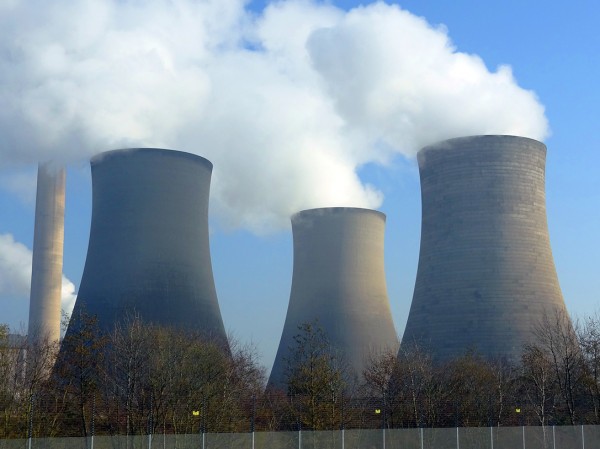 One example of an oligopoly was recently discussed on this blog –supermarkets. Here, is another classic example: the energy sector. It is dominated by six big firms, which hold the majority of the market in an industry with high barriers to entry; there is inter-dependence between the firms; and there are accusations of price fixing and collusion – all typical features of an oligopoly that may operate against consumers’ interests.
One example of an oligopoly was recently discussed on this blog –supermarkets. Here, is another classic example: the energy sector. It is dominated by six big firms, which hold the majority of the market in an industry with high barriers to entry; there is inter-dependence between the firms; and there are accusations of price fixing and collusion – all typical features of an oligopoly that may operate against consumers’ interests.
There have been numerous investigations into the actions of these energy providers, owing to their high prices, a lack of competition and significant profits. Developments in the industry have focused on reducing the barriers to entry created by the vertical integration of the incumbent firms in order to make it easier for new firms to enter, thus boosting competition.
However, the latest step is the biggest one, with the energy regulator, Ofgem, referring this industry to the Competition and Markets Authority (CMA). The investigation is likely to last 18 months and will ‘leave no stone unturned in establishing the truth behind energy prices’.
One of the key things that will be investigated is the accusation of profiteering and thus whether the big six should be broken up. This would inevitably lead to reductions in entry barriers and more opportunities for new firms to enter the market, thereby creating a much needed increase in competition. The Chief Executive of Ofgem, Dermot Nolan said:
Now is the right time to refer the energy market to the CMA for the benefit of consumers…There is near-unanimous support for a referral and the CMA investigation offers an important opportunity to clear the air. This will help rebuild consumer trust and confidence in the energy market as well as provide the certainty investors have called for.
Further comments were made about the energy sector and the future direction in terms of market reforms. This was another reason given for the referral to the CMA. Dermot Nolan added:
A CMA investigation should ensure there are no barriers to stop effective competition bearing down on prices and delivering the benefits of these changes to consumers.
The impact of this latest news will undoubtedly be felt by the big six, with share prices already taking a small hit, as investors start to look ahead to the potential outcome, despite any decision not being expected for a good 18 months. The following articles consider this latest energy market development.
Ofgem puts big six energy suppliers under CMA spotlight The Guardian, Terry Macalister (26/6/14)
Ofgem refers ‘big six’ energy groups for competition probe Financial Times, Claer Barrett (26/6/14)
U.K. energy regulator Ofgem asks for utilities probe Wall Street Journal, Selina Williams (26/6/14)
Energy probe could lead to ‘major structural change’ BBC News (26/6/14)
Probe into energy firms’ £100 per home profits The Telegraph, Emily Gosden (26/6/14)
UK competition watchdog kicks off energy suppliers probe Reuters (26/6/14)
Energy sharks may £101 profit per family: Major inquiry launched into power Mail Online, Sean Poulter (26/6/14)
Big six energy firms face full competition probe Independent, Simon Read (26/6/14)
Questions
- How well does the energy sector fit the structure of an oligopoly?
- What are the barriers to entry in the energy market? How can this referral to the CMA help to reduce them?
- Which factors determine the price of energy?
- The big six have been accused of profiteering. What is meant by this and why is it against the public interest?
- Why has it taken so long for such a referral to take place?
- In the BBC News article, the suggestion is that this investigation could lead to a ‘major structural change’. What is meant by this and why is it a possibility?
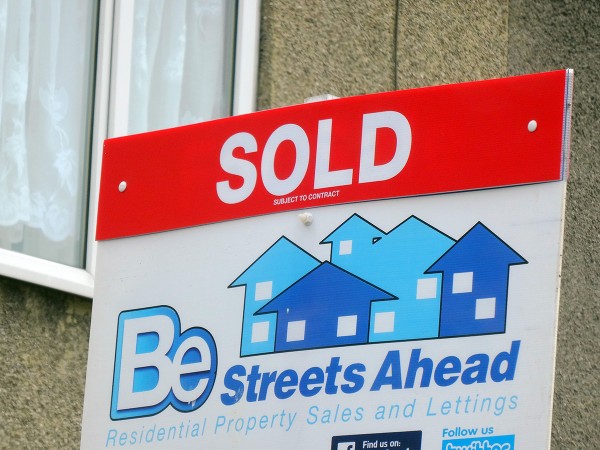 House prices have been rising strongly in London. According to the Halifax House Price index, house prices in London in the first quarter of 2014 were 15.5% higher than a year ago. This compares with 8.7% for the UK as a whole, 1.3% for the North of England and –1.5% for Scotland. CPI inflation was just 1.6% for the same 12-month period.
House prices have been rising strongly in London. According to the Halifax House Price index, house prices in London in the first quarter of 2014 were 15.5% higher than a year ago. This compares with 8.7% for the UK as a whole, 1.3% for the North of England and –1.5% for Scotland. CPI inflation was just 1.6% for the same 12-month period.
The London housing market has been stoked by rising incomes in the capital, by speculation that house prices will rise further and by easy access to mortgages, fuelled by the government’s Help to Buy scheme, which allows people to put down a deposit of as little as 5%. House prices in London in the first quarter of 2014 were 5.3 times the average income of new mortgage holders, up from 3.5 times in the last quarter of 2007, just before the financial crisis.
Concerns have been growing about increasing levels of indebtedness, which could leave people in severe financial difficulties if interest rates were to rise significantly. There are also concerns that an increasing proportion of people are being priced out of the housing market and are being forced to remain in the rental sector, where rents are also rising strongly.
But how can the housing market in London be dampened without dampening the housing market in other parts of the country where prices are barely rising, and without putting a break on the still relatively fragile recovery in the economy generally?
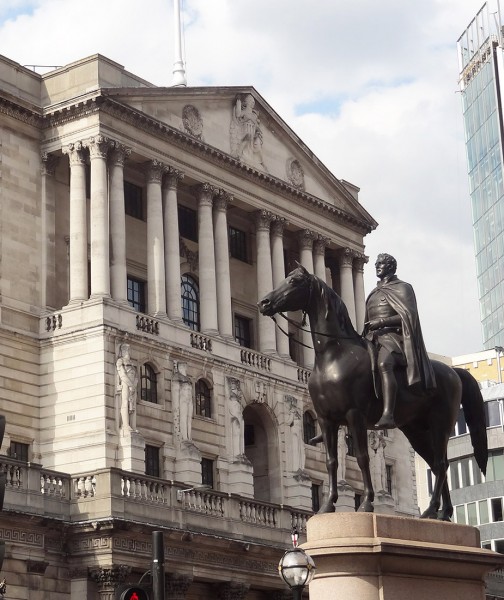
The Governor of the Bank of England has just announced two new measures specific to the housing market and which would apply particularly in London.
The first is to require banks to impose stricter affordability tests to new borrowers. Customers should be able demonstrate their ability to continue making their mortgage payments if interest rates were 3 percentage points higher than now.
The second is that mortgage lenders should restrict their lending to 4½ times people’s income for at least 85% of their lending.
Critics are claiming that these measures are likely to be insufficient. Indeed, Vince Cable, the Business Secretary, has argued for a limit of 3½ times people’s income. Also banks are already typically applying a ‘stress test’ that requires people to be able to afford mortgage payments if interest rates rose to 7% (not dissimilar to the Bank of England’s new affordability test).
The videos and articles look at the measures and consider their adequacy in dealing with what is becoming for many living in London a serious problem of being able to afford a place to live. They also look at other measures that could have been taken.
Webcasts and Podcasts
 The Bank of England announces plans for a new affordability test BBC News (26/6/14)
The Bank of England announces plans for a new affordability test BBC News (26/6/14)
 Bank of England moves to avert housing boom BBC News, Simon Jack (26/6/14)
Bank of England moves to avert housing boom BBC News, Simon Jack (26/6/14)
 Bank of England to act on house prices in south-east BBC News, Robert Peston (25/6/14)
Bank of England to act on house prices in south-east BBC News, Robert Peston (25/6/14)
 Bank of England measures ‘insure against housing boom’ BBC News, Robert Peston (26/6/14)
Bank of England measures ‘insure against housing boom’ BBC News, Robert Peston (26/6/14)
 Carney: There is a ‘new normal’ for interest rates BBC Today Programme, Mark Carney (27/6/14)
Carney: There is a ‘new normal’ for interest rates BBC Today Programme, Mark Carney (27/6/14)
Articles
Bank of England imposes first limits on size of UK mortgages Reuters, Ana Nicolaci da Costa and Huw Jones (26/6/14)
Stability Report – Mark Carney caps mortgages to cool housing market: as it happened June 26, 2014 The Telegraph, Martin Strydom (26/6/14)
Bank of England cracks down on mortgages The Telegraph, Szu Ping Chan (26/6/14)
Mortgage cap ‘insures against housing boom’ BBC News (26/6/14)
Viewpoints: Is the UK housing market broken? BBC News (26/6/14)
How can UK regulators cool house prices? Reuters (25/6/14)
Bank will not act on house prices yet, says Carney The Guardian, Jill Treanor and Larry Elliott (26/6/14)
Mark Carney’s housing pill needs time to let economy digest it The Guardian, Larry Elliott (26/6/14)
Bank Of England Admits Plans To Cool Housing Market Will Have ‘Minimal’ Impact Huffington Post, Asa Bennett (26/6/14)
Carney Surprises Are Confounding Markets as U.K. Central Bank Manages Guidance Bloomberg, Scott Hamilton and Emma Charlton (26/6/14)
House prices: stop meddling, Mark Carney, and bite the bullet on interest rates The Telegraph, Jeremy Warner (27/6/14)
Mark Carney’s Central Bank Mission Creep Bloomberg, Mark Gilbert (26/6/14)
Consultation paper
Implementing the Financial Policy Committee’s Recommendation on loan to income ratios in mortgage lending Bank of England (26/6/14)
Bank of England consults on implementation of loan-to-income ratio limit for mortgage lending Bank of England News Release (26/6/14)
Data
Links to sites with data on UK house prices Economic Data freely available online, The Economics Network
Questions
- Identify the main factors on the demand and supply sides that could cause a rise in the price of houses. How does the price elasticity of demand and supply affect the magnitude of the rise?
- What other measures could have been taken by the Bank of England? What effect would they have had on the economy generally?
- What suggests that the Bank of England is not worried about the current situation but rather is taking the measures as insurance against greater-than-anticipated house price inflation in the future?
- Why are UK households currently in a ‘vulnerable position’?
- What factors are likely to determine the future trend of house prices in London?
- Is house price inflation in London likely to stay significantly above that in other parts of the UK, or is the difference likely to narrow or even disappear?
- Should the Bank of England be given the benefit of the doubt in being rather cautious in its approach to dampening the London housing market?
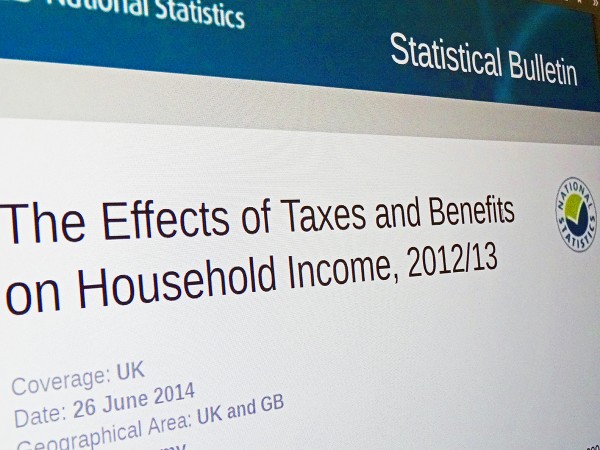 The ONS has just released its annual publication, The Effects of Taxes and Benefits on Household Income. The report gives data for the financial year 2012/13 and historical data from 1977 to 2012/13.
The ONS has just released its annual publication, The Effects of Taxes and Benefits on Household Income. The report gives data for the financial year 2012/13 and historical data from 1977 to 2012/13.
The publication looks at the distribution of income both before and after taxes and benefits. It divides the population into five and ten equal-sized groups by household income (quintiles and deciles) and shows the distribution of income between these groups. It also looks at distribution within specific categories of the population, such as non-retired and retired households and different types of household composition.
The data show that the richest fifth of households had an average pre-tax-and-benefit income of £81,284 in 2012/13, 14.7 times greater than average of £5536 for the poorest fifth. The richest tenth had an average pre-tax-and-benefit income of £104,940, 27.1 times greater than the average of £3875 for the poorest tenth.
 After the receipt of cash benefits, these gaps narrow to 6.6 and 11.0 times respectively. When the effect of direct taxes are included (giving ‘disposable income’), the gaps narrow further to 5.6 and 9.3 times respectively. However, when indirect taxes are also included, the gaps widen again to 6.9 and 13.6 times.
After the receipt of cash benefits, these gaps narrow to 6.6 and 11.0 times respectively. When the effect of direct taxes are included (giving ‘disposable income’), the gaps narrow further to 5.6 and 9.3 times respectively. However, when indirect taxes are also included, the gaps widen again to 6.9 and 13.6 times.
This shows that although direct taxes are progressive between bottom and top quintiles and deciles, indirect taxes are so regressive that the overall effect of taxes is regressive. In fact, the richest fifth paid 35.1% of their income in tax, whereas the poorest fifth paid 37.4%.
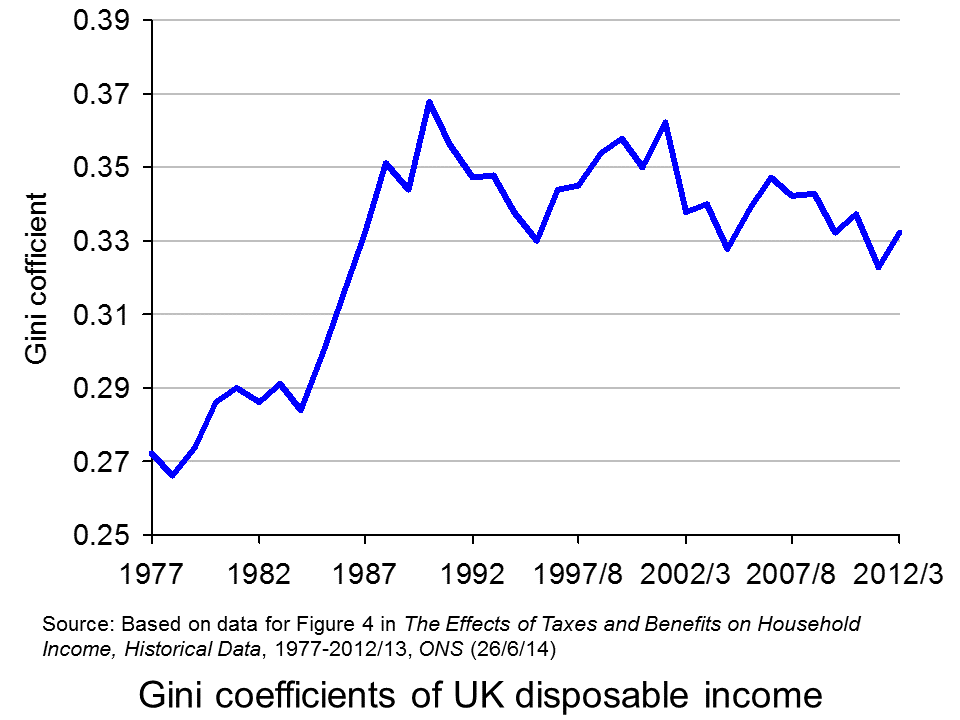 Taking the period from 1977 to 2012/13, inequality of disposable income (i.e. income after direct taxes and cash benefits) increased from 1977 to 1988, especially during the second two Thatcher governments (1983 to 1990) (see chart opposite). But then in the first part of the 1990s inequality fell, only to rise again in the late 1990s and early 2000s. However, with the Labour government giving greater cash benefits for the poor, inequality reduced once more, only to widen again in the boom running up to the banking crisis of 2007/8. But then, with recession taking hold, the incomes of many top earners fell and automatic stabilisers helped protect the incomes of the poor. Inequality consequently fell. But with the capping of benefit increases and a rise in incomes of many top earners as the economy recovers, so inequality is beginning to rise once more – in 2012/13, the Gini coefficient rose to 0.332 from 0.323 the previous year.
Taking the period from 1977 to 2012/13, inequality of disposable income (i.e. income after direct taxes and cash benefits) increased from 1977 to 1988, especially during the second two Thatcher governments (1983 to 1990) (see chart opposite). But then in the first part of the 1990s inequality fell, only to rise again in the late 1990s and early 2000s. However, with the Labour government giving greater cash benefits for the poor, inequality reduced once more, only to widen again in the boom running up to the banking crisis of 2007/8. But then, with recession taking hold, the incomes of many top earners fell and automatic stabilisers helped protect the incomes of the poor. Inequality consequently fell. But with the capping of benefit increases and a rise in incomes of many top earners as the economy recovers, so inequality is beginning to rise once more – in 2012/13, the Gini coefficient rose to 0.332 from 0.323 the previous year.
As far as income after cash benefits and both direct and indirect taxes is concerned, the average income of the richest quintile relative to that of the poorest quintile rose from 7.2 in 2002/3 to 7.6 in 2007/8 and then fell to 6.9 in 2012/13.
Other headlines in the report include:
Since the start of the economic downturn in 2007/08, the average disposable income has decreased for the richest fifth of households but increased for the poorest fifth.
Cash benefits made up over half (56.4%) of the gross income of the poorest fifth of households, compared with 3.2% of the richest fifth, in 2012/13.
The average disposable income in 2012/13 was unchanged from 2011/12, but it remains lower than at the start of the economic downturn, with equivalised disposable income falling by £1200 since 2007/08 in real terms. The fall in income has been largest for the richest fifth of households (5.2%). In contrast, after accounting for inflation and household composition, the average income for the poorest fifth has grown over this period (3.5%).
This is clearly a mixed picture in terms of whether the UK is becoming more or less equal. Politicians will, no doubt, ‘cherry pick’ the data that suit their political position. In general, the government will present a good news story and the opposition a bad news one. As economists, it is hoped that you can take a dispassionate look at the data and attempt to relate the figures to policies and events.
Report
The Effects of Taxes and Benefits on Household Income, 2012/13 ONS (26/6/14)
Data
Reference tables in The Effects of Taxes and Benefits on Household Income, 2012/13 ONS (26/6/14)
The Effects of Taxes and Benefits on Household Income, Historical Data, 1977-2012/13 ONS (26/6/14)
Rates of Income Tax: 1990-91 to 2014-15 HMRC
Articles
Inequality is on the up again – Osborne’s boast is over New Statesman, George Eaton (26/6/14)
Disposable incomes rise for richest fifth households only Money.com, Lucinda Beeman (26/6/14)
Half of families receive more from the state than they pay in taxes but income equality widens as rich get richer Mail Online, Matt Chorley (26/6/14)
Rich getting richer as everyone else is getting poorer, Government’s own figures reveal Mirror, Mark Ellis (26/6/14)
The Richest Households Got Richer Last Year, While Everyone Else Got Poorer The Economic Voice (27/6/14)
Questions
- Define the following terms: original income, gross income, disposable income, post-tax income, final income.
- How does the receipt of benefits in kind vary across the quintile groups? Explain.
- What are meant by the Lorenz curve and the Gini coefficient and how is the Gini coefficient measured? Is it a good way of measuring inequality?
- Paint a picture of how income distribution has changed over the past 35 years.
- Can changes in tax be a means of helping the poorest in society?
- What types of income tax cuts are progressive and what are regressive?
- Why are taxes in the UK regressive?
- Why has the fall in income been largest for the richest fifth of households since 2007/8? Does this mean that, as the economy recovers, the richest fifth of households are likely to experience the fastest increase in disposable incomes?
 The round robin group stage of the World Cup was recently completed with 16 out of the 32 countries eliminated from the competition – including England, Italy and Spain. The remaining 16 countries progressed to the single game elimination section of the tournament. At the time of writing, the first round of elimination games had been completed with the remaining 8 teams proceeding to the quarter finals of the tournament. Two of these 8 elimination games ended as a draw after extra time. The winner was decided by a penalty shoot-out e.g. Brazil and Costa Rica. Are these shoot-outs just a lottery or are there any factors that significantly influence their outcome?
The round robin group stage of the World Cup was recently completed with 16 out of the 32 countries eliminated from the competition – including England, Italy and Spain. The remaining 16 countries progressed to the single game elimination section of the tournament. At the time of writing, the first round of elimination games had been completed with the remaining 8 teams proceeding to the quarter finals of the tournament. Two of these 8 elimination games ended as a draw after extra time. The winner was decided by a penalty shoot-out e.g. Brazil and Costa Rica. Are these shoot-outs just a lottery or are there any factors that significantly influence their outcome?






